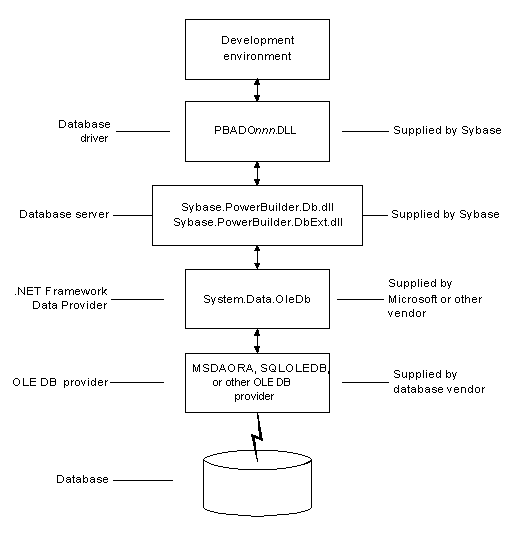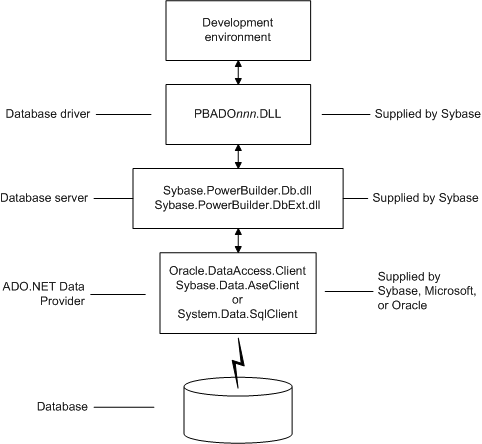When you access a database using ADO.NET in PowerBuilder, your connection goes through several layers before reaching the database. It is important to understand that each layer represents a separate component of the connection, and that components might come from different vendors.
The PowerBuilder ADO.NET interface consists of a driver (pbado105.dll) and a server (Sybase.PowerBuilder.Db.dll or Sybase.PowerBuilder.DbExt.dll). Both DLLs must be deployed with an application that connects to a database using ADO.NET.
The PowerBuilder database interface for ADO.NET supports the ADO.NET data providers listed in Table 5-1.
Data Provider |
Namespace |
|---|---|
.NET Framework Data Provider for OLE DB |
System.Data.OleDb |
.NET Framework Data Provider for SQL Server |
System.Data.SqlClient |
Oracle Data Provider for .NET (ODP.NET) |
Oracle.DataAccess.Client |
Sybase ADO.NET Data Provider for Adaptive Server Enterprise (ASE) |
Sybase.Data.AseClient |
Additional .NET Framework data providers may be supported in future releases. Please see the release bulletin for the latest information.
Figure 5-1 shows the general components of an ADO.NET connection using the OLE DB .NET Framework data provider.
Figure 5-1: Components of an ADO.NET OLE DB connection

Figure 5-2 shows the general components of an ADO.NET connection using a native ADO.NET data provider.
Figure 5-2: Components of a native ADO.NET connection
